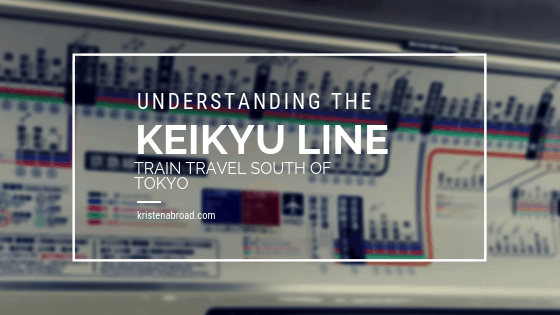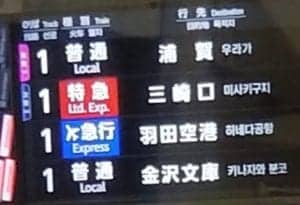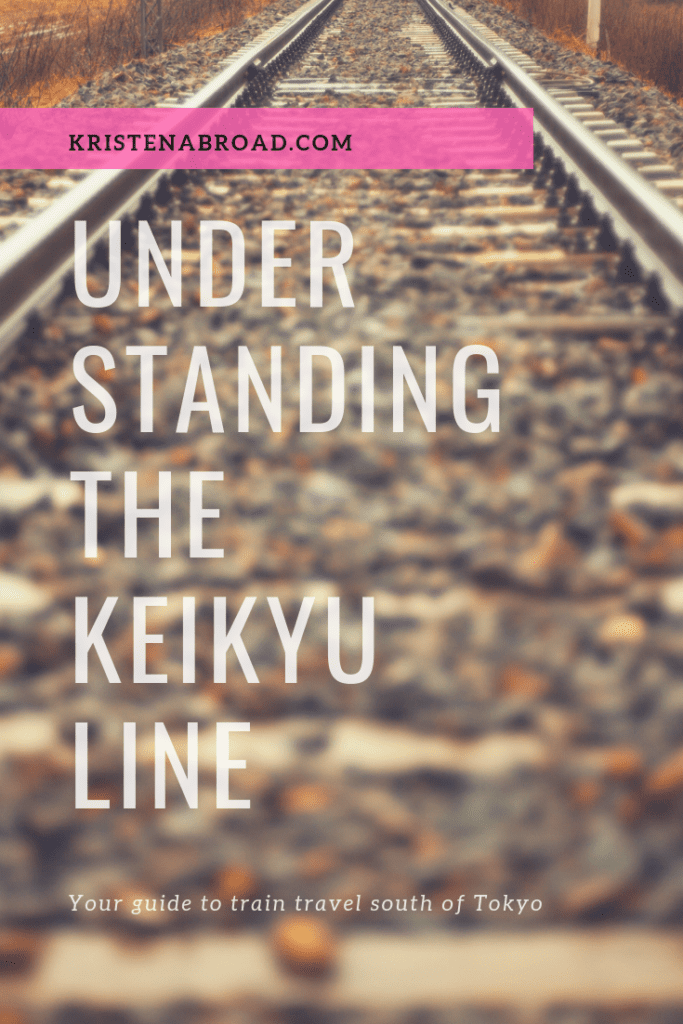If you don’t have a reason to go South of Tokyo into Kanagawa, you may never get the opportunity to ride the Keikyu Line. But you may have ridden its “follow on” line through Tokyo, or even to Narita. The Asakusa Line and the Keisei line. And if you are going to Haneda from Shinagawa? The Keikyu Line can get you there. So grab your Pasmo and read on for some quick tips that will make your journey easier.
Understanding the Keikyu Line
There’s a few things you need to be aware of when riding the Keikyu line. That is the difference in stopping and how to tell which “version” of the train you are on. It can also dictate your route to some extent so it’s important to watch out for.
Quick Japanese Lesson
Train designators that you should learn are as follows. For this discussion, they apply specifically to the Keikyu Line but there will be overlap with other train systems you are on.
- 普通、ふつ, Futsu, Local. Can be translated as “normal” or “usual”. This is a good one to know for ramen ordering too!
- 急行, きゅうこう, Kyuukou, Express. The kanji literally mean “hurry” and “to go”.
- 特急, とっきゅう, Tokkyuu, Limited Express. The kanji in this one mean “special” and “hurry”. That’s how you get it’s faster than just the normal “express” train.
- 快特, かいとく, Kaitoku, Limited Express. This one is sort of unique. The pieces are “pleasant” and “special”. Google won’t translate that one correctly for you.
Did you notice those last two translate to the same thing? There is a difference, the later is more what you could consider a “super express” and you will see that designation on other train systems. However, they don’t always use that Japanese. Oh, language!
The colors
Before you learn the Japanese words for local, express, limited express, it’s helpful to have a quick guideline. As you saw from the above language lesson, it can also be confusing anyway! The English words are underneath but if you are hurrying for the train, that split second to process that information may be the difference between you making your train or having to wait. Hence, most native English speakers refer to them by the colors in the background. Not to be confused with the different “special” color trains of blue sky and yellow happy, or the love trains.
This will also correspond to any displays in the station as well but sometimes smaller stations will only have a scrolling information screen and will call them out as “local” or “limited express”.
“Black” Train, 普通 Futsu, Local
This is the local. It stops at every single stop. Back in the day when the Keikyu line ran all night on New Years Eve, it was a black train. And therefore was just an excuse to sleep on the train instead of crashing at a hotel because it took forever. 2-3 hours to get south in what takes you an hour on a limited express.
These are still helpful though to get to you between the major stops. Just get part way on an express and switch to the local for a quicker trek for long distances.
“Blue” Train, 急行 Kyuukou, Airport Express
The Keikyu line has two “off shoot” routes that are where the “blue” trains run. One from Kanazawa Hakkei down to Shin Zushi station. The other is from Keikyu Kamata down to Haneda Airport. The blue line is the airport line… slash get to zushi beach line. However, be careful because there are times during the day that the red or green trains do go to Haneda instead of all the way to Tokyo.
Headed to Narita? A few times a day there are direct trains all the way on the Keikyu Line. It takes a lot longer but is much cheaper than taking the JR Narita Express.
“Red” Train, 特急 Tokkyuu, Limited Express
This is the rush hour train. It runs only around 5 am and 8:30 am in the morning, 4:30 pm and 6:30 pm in the evening. Depending on which station you are embarking from. The last express trains running at night are also reds so if you are coming home super late, expect it to take a little longer. 9:30 pm and on if you are headed north. South they start switching to reds around 10 pm. It stops at a few more stops than the green trains but not nearly as many as the blue or black.
“Green” Train, 快特 Kaitoku, Limited Express
The Limited Express. This train, after the green, stops the least. If you are trying to get to a major hub (Yokosuka, Yokohama, Kawasaki, Shinagawa), this is the train you want to get on. If you are at a local, your goal should be to get to the closest station with a green stop and transfer.
“The Wing”
And just to be SUPER special during rush hour, the wing cuts off a huge section of stops. Non-stop service between Shinagawa and Kamiooka. If you are commuting from way south to Tokyo, or vice versa, it saves some time and hassle. However, it does cost you extra money. The nice thing though, it’s the only Keikyu line train with reserved seats. So you won’t have to worry about standing.
Reading the maps
Pretty straight forward being as they are color coded. You just want to look out for the station name and a dot along with the color. If there is a dot, that train will stop there. The black background on station names means that the limited express stops there. If you are looking to go long distances, these are the main “hubs” that you should transfer at.
The map will be located at the station but also they are in the train cars as well. If there isn’t one near the door you are standing at, try the opposite side of the train. The best part of riding the train is there are some great apps to make it easy for you.




